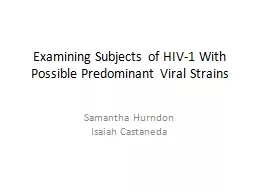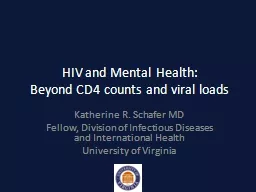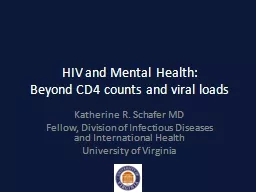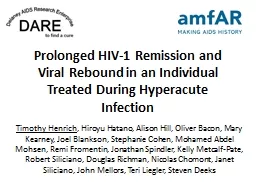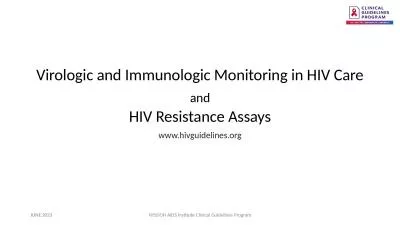PPT-Examining Subjects of HIV-1 With Possible Predominant Viral
Author : myesha-ticknor | Published Date : 2016-12-02
Samantha Hurndon Isaiah Castaneda Whats to Come HIV1 Briefing What provoked our question Methodology Results Narrowing it down What does it all mean Hiv1 Viral
Presentation Embed Code
Download Presentation
Download Presentation The PPT/PDF document "Examining Subjects of HIV-1 With Possibl..." is the property of its rightful owner. Permission is granted to download and print the materials on this website for personal, non-commercial use only, and to display it on your personal computer provided you do not modify the materials and that you retain all copyright notices contained in the materials. By downloading content from our website, you accept the terms of this agreement.
Examining Subjects of HIV-1 With Possible Predominant Viral: Transcript
Download Rules Of Document
"Examining Subjects of HIV-1 With Possible Predominant Viral"The content belongs to its owner. You may download and print it for personal use, without modification, and keep all copyright notices. By downloading, you agree to these terms.
Related Documents

